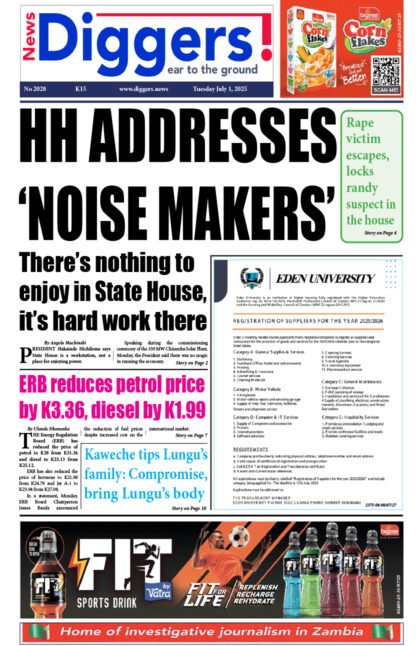THE Zambia Environmental Management Agency (ZEMA) has submitted to the Constitutional Court that mining activities can sustainably take place in the Lower Zambezi National Park in accordance with conditions of approval because the anticipated risks can be sufficiently mitigated.
And ZEMA has submitted that public consultations were undertaken by Mwembeshi Resources Limited prior to the submission of the Environmental Impact Statement (EIS) to it on March 14, 2012.
This is a matter in which Environmentalist Robert Chimambo has petitioned the Constitutional Court seeking an order that mining in the Lower Zambezi National Park violates the Constitution and that the State and ZEMA should withdraw the approval of the Environmental Impact Statement (EIS).
Chimambo who has cited the Attorney General and ZEMA as respondents, wants the court to order that the EIS dated May 7, 2021, should be withdrawn for being in violation of the Constitution and an order that freedom of the environmental information is a Constitutional right in Zambia.
But in its answer, ZEMA stated that the Environmental Impact Statement pertaining to Mwembeshi Resources Limited’s intention to undertake large-scale mining activities in the Lower Zambezi National Park was approved by the Minister responsible for environmental protection in accordance with section 115 of the Environmental Management Act (EMA).
It stated that it issued a decision letter ZEMA /INS/101/04/1 stipulating conditions of the said approval on February 3, 2014.
“The second respondent (ZEMA) will state that consultations were undertaken prior to the approval of the EIS and the addendum. The second respondent will reiterate that public consultations were undertaken by the developer prior to the submission of the EIS to the second respondent on 14 th March 2012. The second respondent will state that: (i) The plans referred to under Article 253(1)(i) are assessed by way of a Strategic Environmental Assessment (SEA) in accordance with section 23 of the Act. (ii) The policies, plans or programmes under Article 255(I) are assessed by way of a SEA in accordance with section 23 of the Act and the project was not a subject of a SEA. (iii) The petitioner’s right to environmental information under Article 257(d) was not infringed on,” the answer read.
“The second respondent avers that mining activities can sustainably take place in the Lower Zambezi National Park in accordance with conditions of approval as the anticipated risks can be sufficiently mitigated. The petitioner has unsuccessfully challenged the implementation of the project under cause numbers 2014/HP/A006, in the High Court and appeal 001/2020, in the Court of Appeal. The petitioner did not invoke the appeal process under section 116 of the EMA against the re-registration of the project following Decision Letter ZEMA/INS/1010/04/1 of May 7, 2021.”
ZEMA argued that the petitioner was not entitled to any of the reliefs prayed for.
It further argued that the petitioner had failed to show that ZEMA violated any provisions of the Constitution of Zambia Act number 2 of 2016, and therefore contended that the petition should be dismissed with costs to it.



















